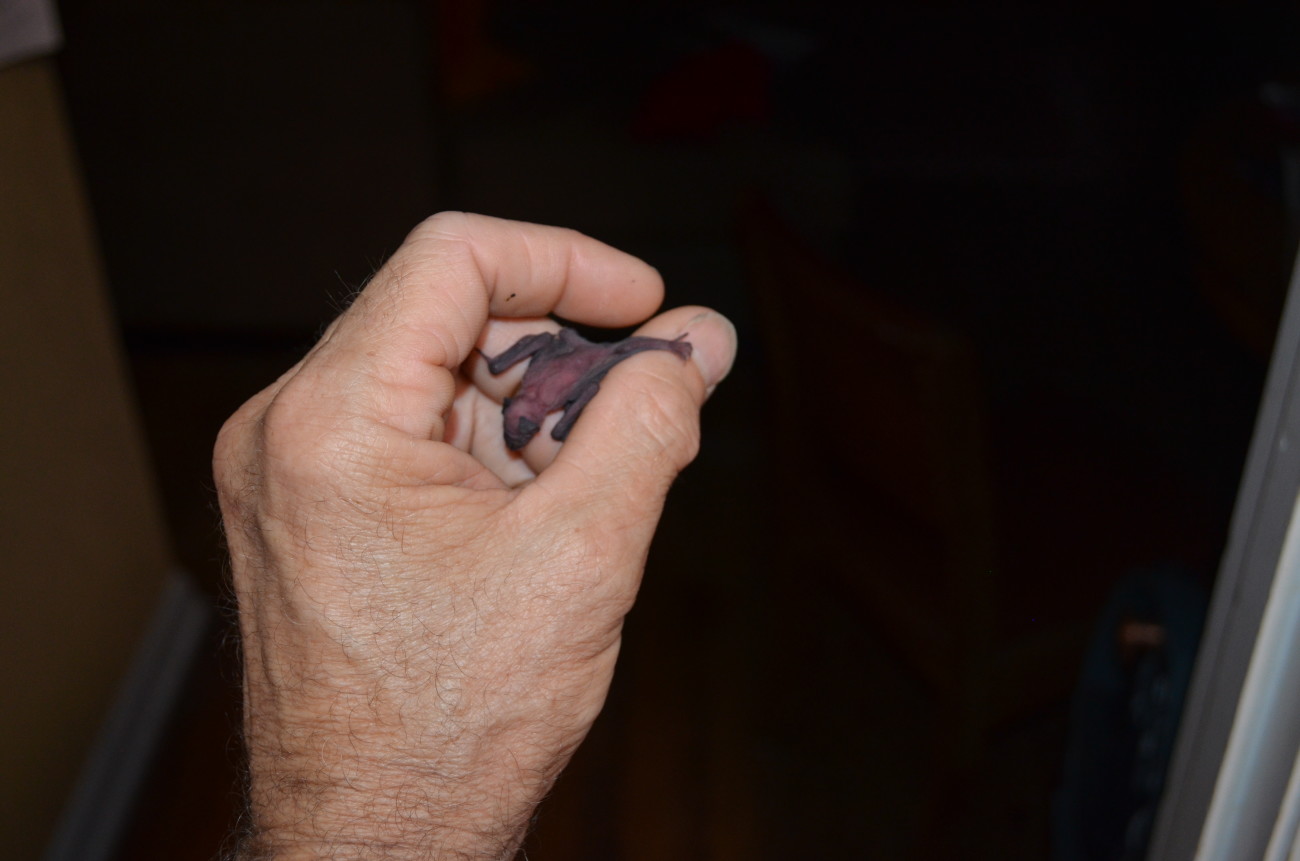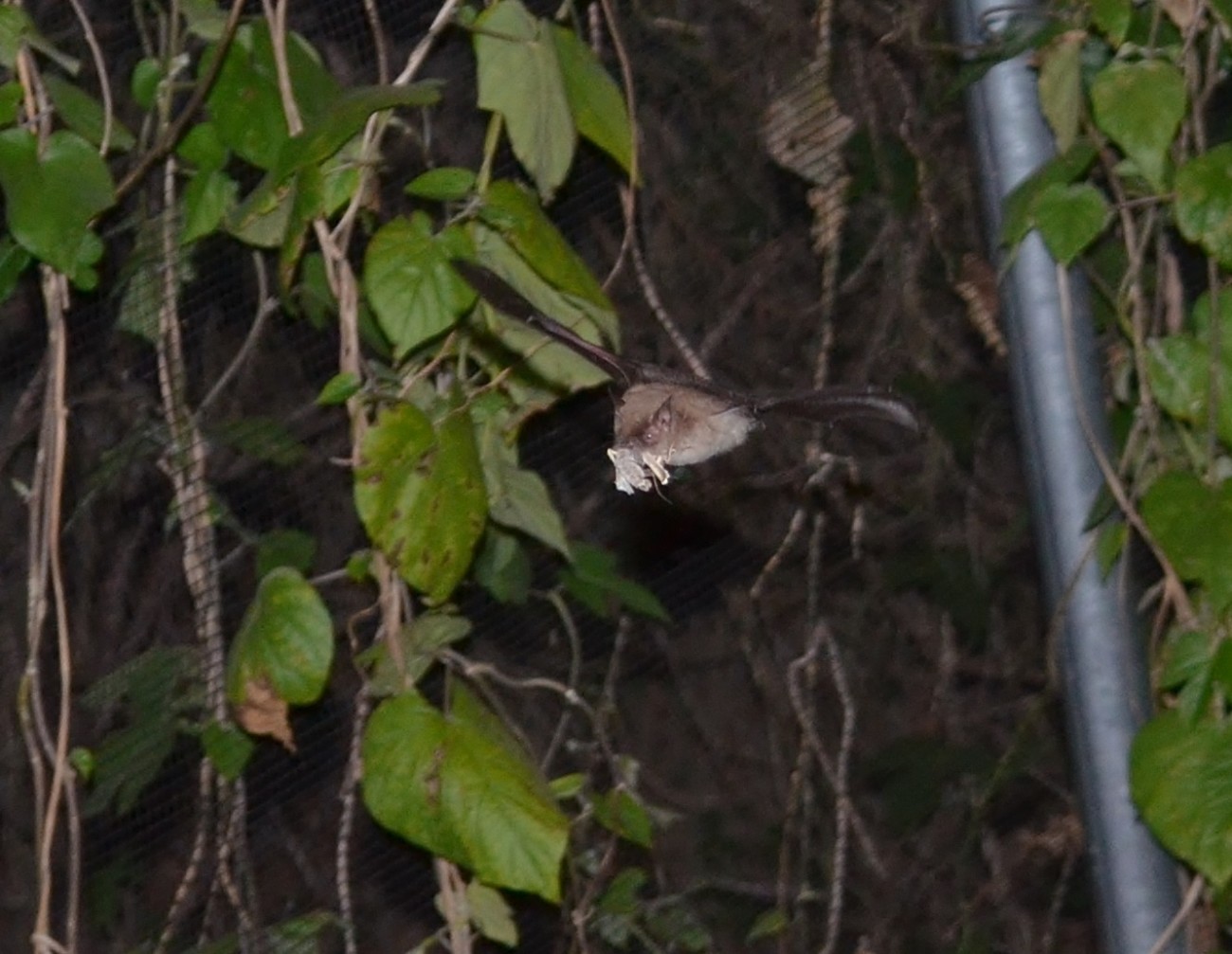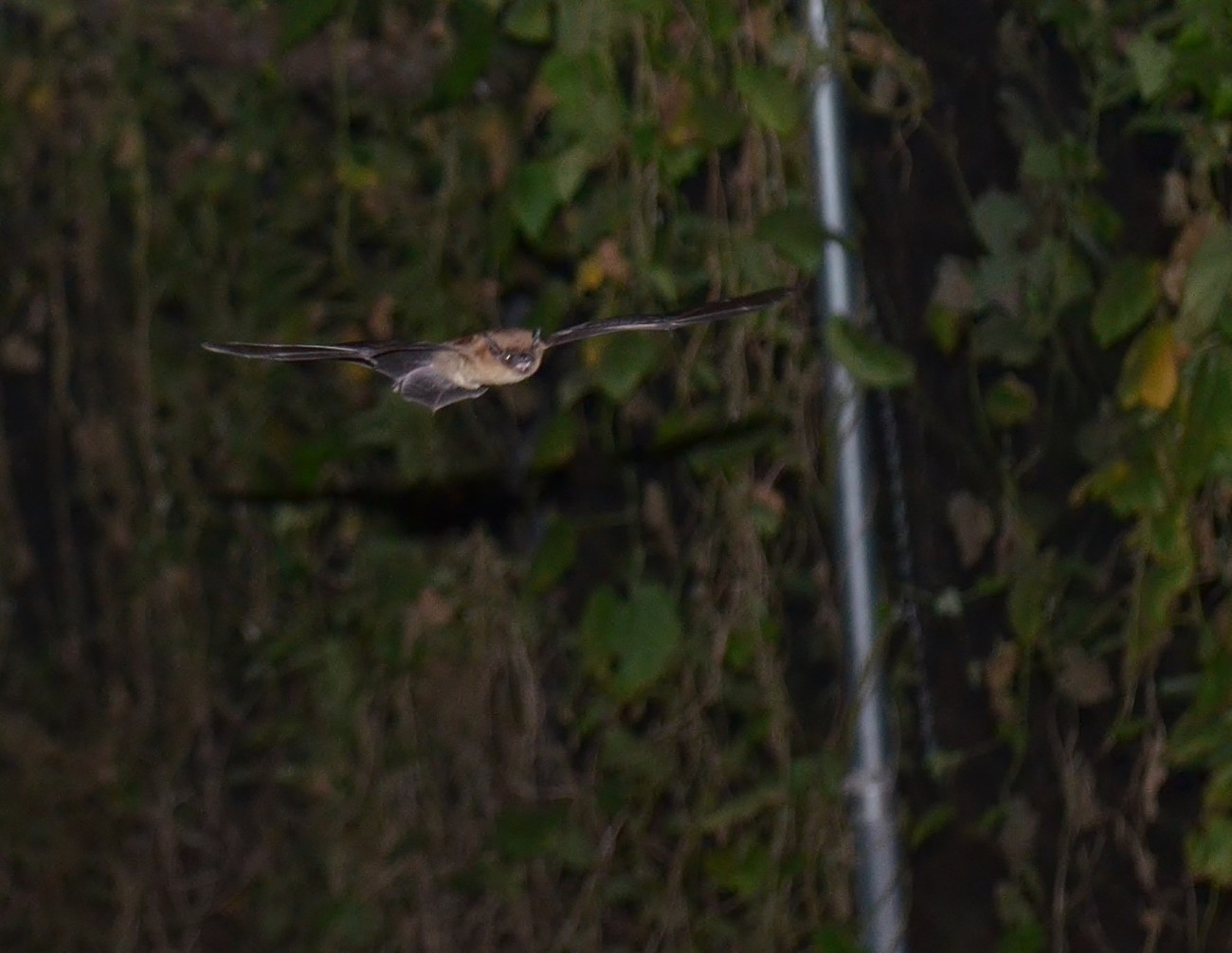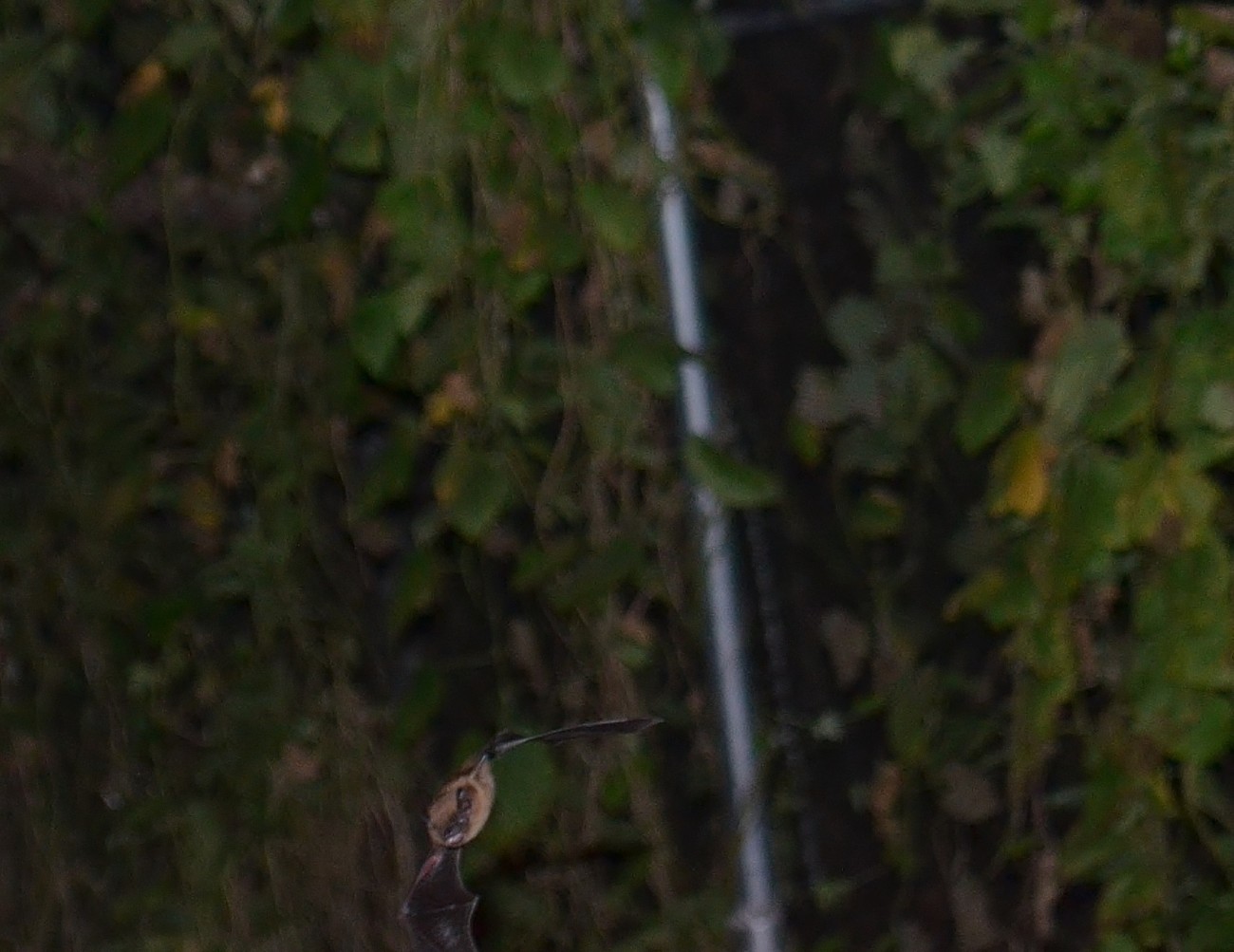We have photographic evidence that our wonderful Myotis velifer, Mothra, can catch her own food on the wing. She’s sure come a long way since we got here as a neo-nate last summer. Love this bat!



We have photographic evidence that our wonderful Myotis velifer, Mothra, can catch her own food on the wing. She’s sure come a long way since we got here as a neo-nate last summer. Love this bat!



Our over-winter evening bat guests have been shredding the flight cage the last few nights. First clear night we’ll wait till the flyers are hunting in the flight cage, then we’ll take the non-volants out of the bat box and put them in a pup tent. The next morning we’ll have only flyers in the box and we can gather them for release. These are very cool little bats!


Great talk yesterday by Inga Geipel of the Smithsonian Tropical Research Institute Panama titled: “Bats: Finding prey through sound – two ends of an acoustic spectrum”.
On one end of the spectrum: Trachops cirrhosus, the fringe-lipped bat, a passive listener which waits for its frog prey to call and make itself known.
On the other end of the spectrum: Micronycteris microtis, an active listener which uses echolocation to seek out it’s dragonfly prey in the jungle understory.
Inga and her collaborators at STRI utilize an impressive array of instrumentation to document how each of these bats make a living. It’s always fascinating to see the results of their latest study and hearing about what they are dreaming up next!
It’s a Happy Valentine’s Day for this little male Mexican free-tailed bat! He came to us from our friends at Wildlife Rescue & Rehabilitation in Kendalia, TX and he’s now flying free under the Congress Avenue Bridge, in plenty of time for mating season!
Wild Austin yellow (click on link to left for video)
This northern yellow bat (Lasiurus intermedius) was blown out of an Austin palm tree in yesterday morning’s cold gusty winds. In the video, we see her using her feet to help control her “prey”, in this case, hand-fed mealworms. Although it’s hard to hear in the video, the yellow bats in our care have been the noisiest chewers imaginable. We can hear them down the hall in another room as they demolish their dinner!
Looking back on this adventure from 23Jan2016. What an amazing experience to get to go all the way back into Bracken Cave.
The view from the floor of the maternity dome up to the ceiling is like being in a cathedral! Home to the largest aggregation of mammals on the planet in summer months, on this cold winter day we saw only a single bat flying through the dim light from the mine shaft.
Thanks so much Fran for letting us participate!
Resistivity testing at Bracken Bat Cave. Using electrical implulses to find the deepest guano deposits. Old testing had depth of 36 meters, now with longer infinity cable, preliminary results showed guano depth of over 45 meters! Core sampling at these depths would give us 10,000 year old DNA of bats, their insect prey, and even grains of pollen from the plants the insects were eating!

Down into the cave!

Preparing the cables and electrodes

View from inside with cable leading up toward the entrance

Planting electrodes with hopes of finding yet undiscovered extensions to the cave

Do NOT step on that cable!

End of the infinity line

Cable looped across the cave floor – electrodes every two feet

Once quality controlled, results could show the best location for core sampling; the deepest, most undisturbed guano layers

And hello Austin! Our non-profit organization is officially launched!
